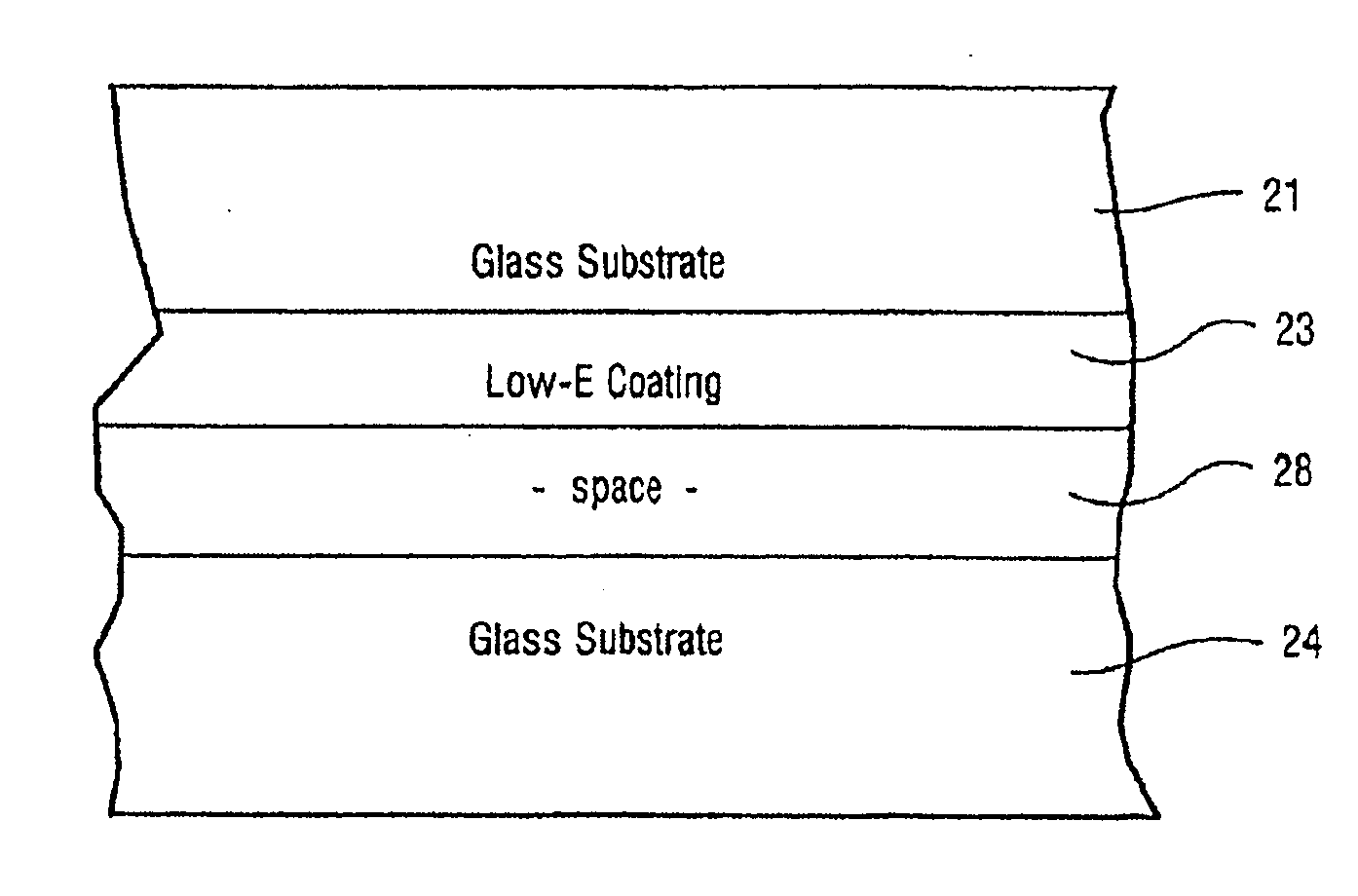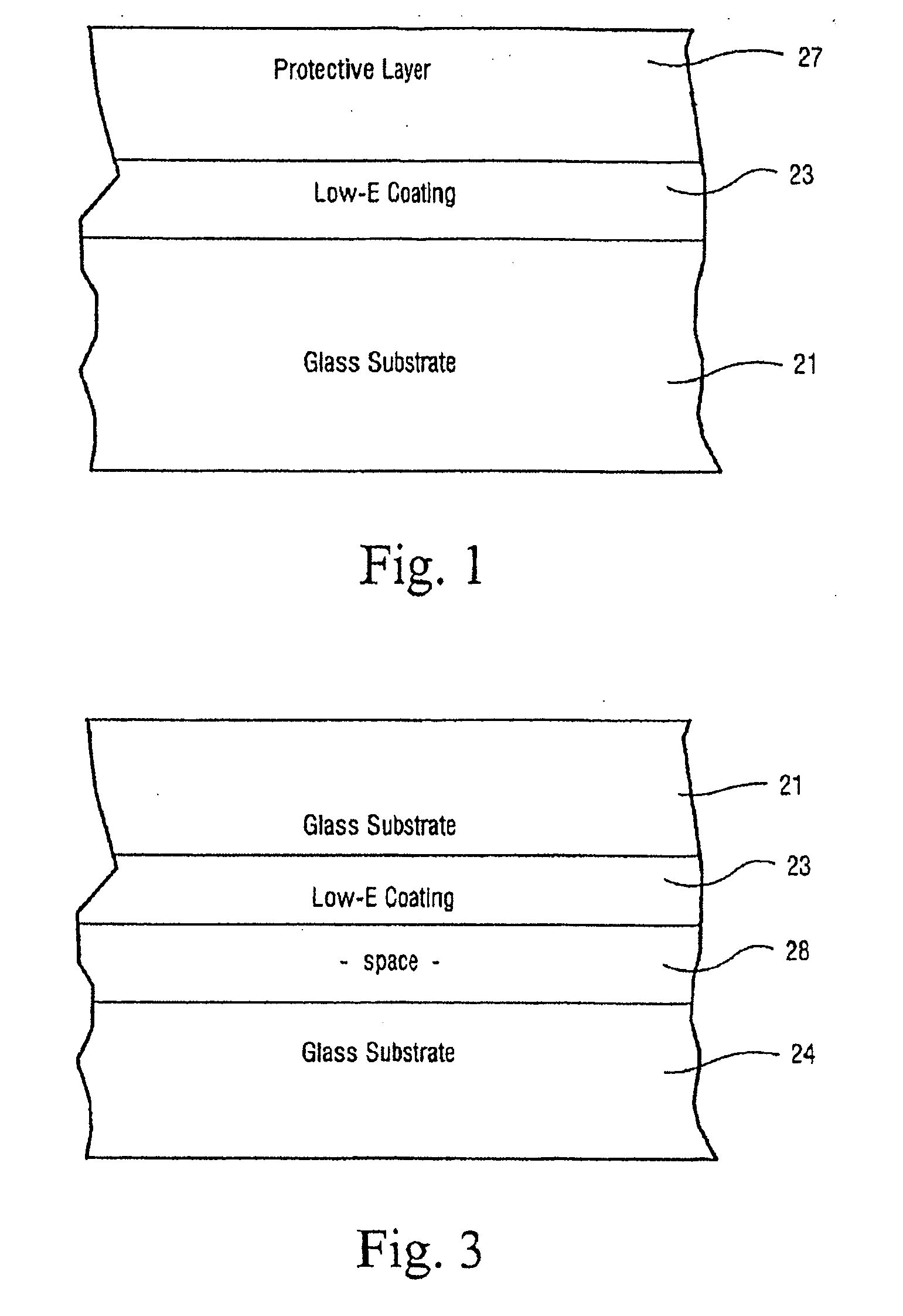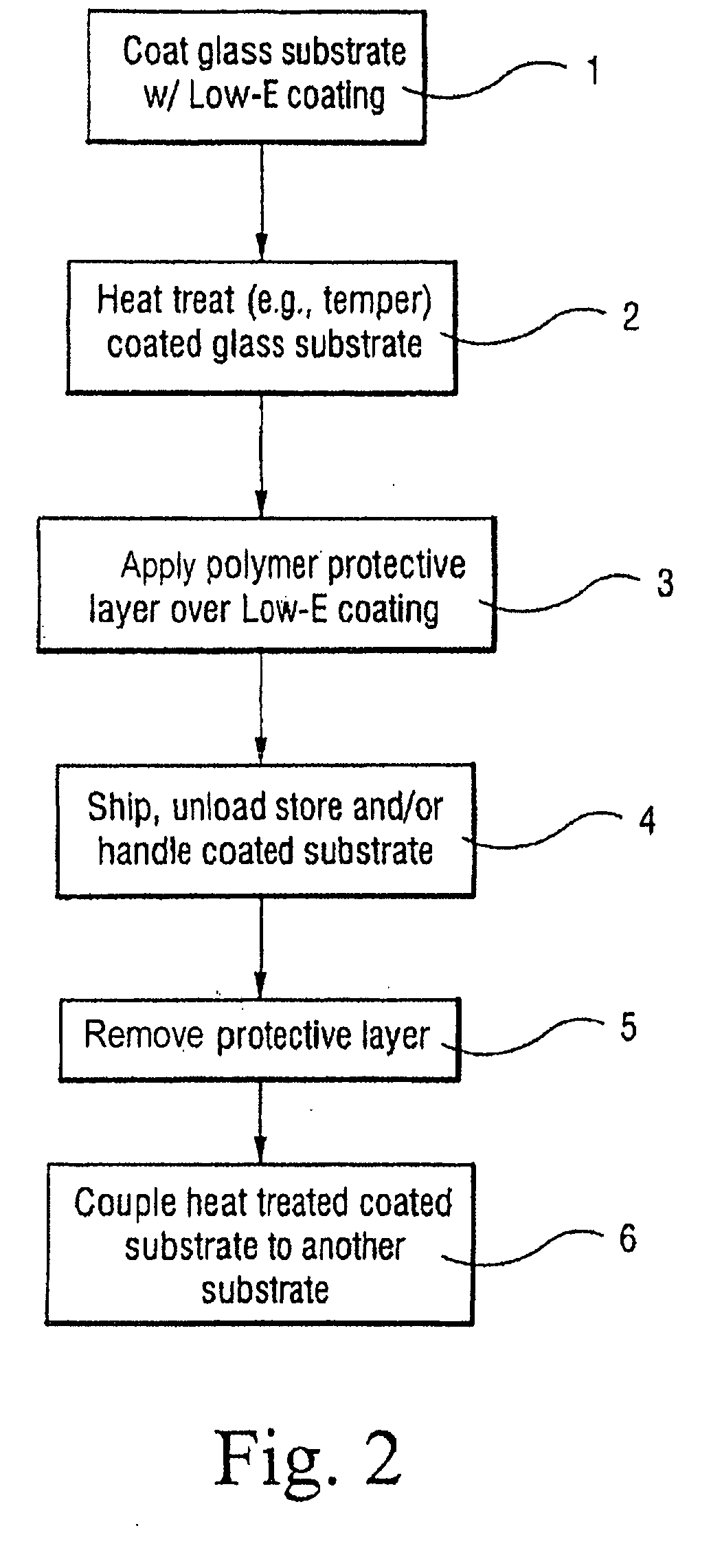Method of making a heat-treated coated glass article using a polymer dispersion
a technology of polymer dispersion and coating glass, which is applied in the field of making a heat-treated coated glass article using a polymer dispersion, can solve the problems of large glass pieces, certain size-related problems related to handling, and the tendency to damage the heat-treated coated glass substra
- Summary
- Abstract
- Description
- Claims
- Application Information
AI Technical Summary
Benefits of technology
Problems solved by technology
Method used
Image
Examples
example 1
[0044]A coating formulation obtained from Eco Coat Glass Protection Systems Inc., British Columbia, Canada, was used in this example to provide surface protection to Guardian's commercial product RLE-HT. Coating formulation EC-44 containing an aqueous acrylic polymer dispersion was applied to a tempered Low-E surface while the glass was maintained at a surface temperature of about 100° C. The conveyor speed was maintained at about 20 meter / min and airless hydraulic spray nozzles were placed at about 20 cm above the glass surface. Due to rapid evaporation of water and solvent the resultant coatings were frosty in appearance and the coating thickness varied from about 15-25 μm. Tempered Low-E glass protected with EC-44 was subjected to 50° C. and 95% relative humidity (RH). The protective coating was removed by applying GS-40 coating converter liquid obtained from Eco Coat. Converter liquid was applied by spray process and after about 15 sec of dwell time the substrate was rinsed unde...
example 2
[0045]A coating formulation obtained from Eco Coat was used in this example to provide surface protection to Guardian's commercial product RLE-HT. Coating formulation EC-44 containing an aqueous acrylic polymer dispersion was applied to a tempered low-E surface while the glass was maintained at a surface temperature of about 38° C. The conveyor speed was maintained at about 20 meter / min and airless hydraulic spray nozzles were placed at about 20 cm above the glass surface. Due to slower evaporation of water and solvent the polymer particles were able coalesce to form a clear and transparent coating. The coating thickness varied from about 6-10 μm. Tempered low-E glass protected with EC-44 was subjected to ASTM salt-fog test. Protected low-E glass was also tested for mechanical protection by Taber abrasion test. Two circular rotating Calibrase CS-10F abrasive wheels with an applied overall load of 500 gm were used for Taber abrasion test. The protective coating was removed after test...
PUM
| Property | Measurement | Unit |
|---|---|---|
| size | aaaaa | aaaaa |
| thickness | aaaaa | aaaaa |
| temperature | aaaaa | aaaaa |
Abstract
Description
Claims
Application Information
 Login to View More
Login to View More - R&D
- Intellectual Property
- Life Sciences
- Materials
- Tech Scout
- Unparalleled Data Quality
- Higher Quality Content
- 60% Fewer Hallucinations
Browse by: Latest US Patents, China's latest patents, Technical Efficacy Thesaurus, Application Domain, Technology Topic, Popular Technical Reports.
© 2025 PatSnap. All rights reserved.Legal|Privacy policy|Modern Slavery Act Transparency Statement|Sitemap|About US| Contact US: help@patsnap.com



